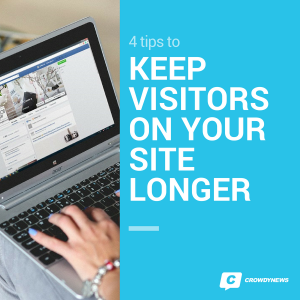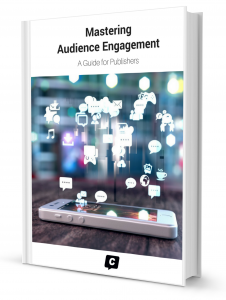
Let’s be honest. Visitors from social can be pesky to digital publishers. From their social media timeline, they click to one of your articles and immediately click back to the social platform they came from. Leaving you disillusioned, with massive bounce rates. The numbers aren’t lying – a recent study showed that publishers are receiving far less money than might have been expected from placing their content on third-party distribution platforms such as Facebook and Snapchat.
The report, from Digital Content Next (DCN), claims that on average, publishers generated $7.7 million in revenue from distributing their content on third-party platforms in the first half of 2016 – coming down to around 14% of their overall revenues in the period.
That is a small percentage, especially considering that social media drives more than 31% of a website’s referral traffic.
So while social media is a massive traffic driver for many online publishers, the revenue results are disappointing. One of the reasons for this is that visitors from social are typically not very loyal – they spend less time on publisher’s sites, scroll through fewer pages, and return less often.
So how can digital publishers keep social visitors on their site longer? Let’s have a look at four tactics that help you turn your visitors from social into more loyal readers.
1) Give them something for free
Whether your goal is to eventually have people sign up for a paid subscription and/or to increase audience engagement metrics, you’ll always want to make site visitors enthusiastic for your content and feel like you’re giving them something they need. Giving them something of value for free helps build that relationship between your publication and the reader. This practice stems from content marketing, and it’s a great way to capture an email address. Once the reader is opted into your email program, you can engage with your audience directly, by, for example, sending newsletters linking to your best content.
Make sure the freebie is something extra and relevant to the article the person is viewing and practical. For example, if you wrote an article about Trump’s travel ban, you can offer them a video or guide in which one of your specialists explains in more detail what this means and what the legal implications are.
Here’s an example of a ‘content-upgrade’ form, relevant to this article (and yes you can actually sign up to receive the guide for free!).

Need more tips on how you can convince your visitors to stay on your site longer?
Get the guide: Audience Engagement for Online Publishers for free:
2) Put high-quality content behind a form
Some publishers put their content behind a paywall. They make the reader curious by showing the title of the article and the first few paragraphs, and if the reader wants to read further they need to purchase the article one-off, or even sign up for a paid subscription. While this is integral to many publishers’ revenue mix, visitors from social are usually not very loyal to a brand. So getting them to make the leap from article to subscription can be difficult, and scare them away Instead, you can offer a lower barrier to entry – such as asking them to submit their email to read more. Putting the last part of the article behind an email wall will pique their curiosity (if they like the article). They can read the rest of the article if they leave their email address behind. This offers you the opportunity again to further engage with them via email, without scaring them away by immediately asking them to pay for the content.
P.S.: You can find some great tips and inspiration on what type of email newsletters to write on Mario García’s blog: “Some of my favourite newsletters”.
3) Give them a warm landing
Most article pages do not provide a warm landing for social visitors – meaning it’s devoid of the social-oriented content and experience that they just came from. Remind yourself that before a visitor clicked over to your article page from social, he or she was scrolling through the timeline, getting updates from friends and people he or she is interested in.
When that person then arrives on a typical article, that ‘social’ atmosphere is immediately gone. Adding social content that’s highly relevant to your article easily “socializes” your article, diminishing the need for your social visitor to go back to the atmosphere they came from. Depending on the topic, relevant social content can be social posts from influencers, industry leaders, politicians, sports heroes, your journalists, etc.

Curious how relevant social media can capture visitors on your site longer?
Get the guide: Audience Engagement for Online Publishers for free:
4) Promote other relevant articles
A visitor clicked on your article in their timeline because the topic of your article matches their interest. Obviously, the content of the article itself needs to be excellent, preferably exceeding expectations otherwise the visitor will go back immediately. If the article the visitor reads is great, he or she will want to read more! In the article, adding links to other articles that are relevant to the subject the visitor is going to read about also entices people to visit more pages (don’t overdo it though, only the ones that really relate to the subject). Make sure the links open up in new tabs, so that the visitor can always go back to the original article if needed.
Apart from links in the article, you can also add a content block next to or below the article to promote other relevant articles. The advantage is that these preview posts often include featured images, and visuals always help to catch someone’s attention. By adding the number of comments, social shares and likes, you can emphasize the popularity of the post (it’s a must-read!).
Now it’s your turn!
The developments in the digital publishing industry have forced online publishers to rethink their strategy. The current focus is much more on audience engagement – making sure you provide your visitors with an excellent user experience, so that they become enthusiastic about the total experience you offer, become more loyal and eventually, they come back and convert.
Choose one or a few of these tactics on your site that resonate with your audience. And of course, be sure to measure, see what works, and tweak for even better results.